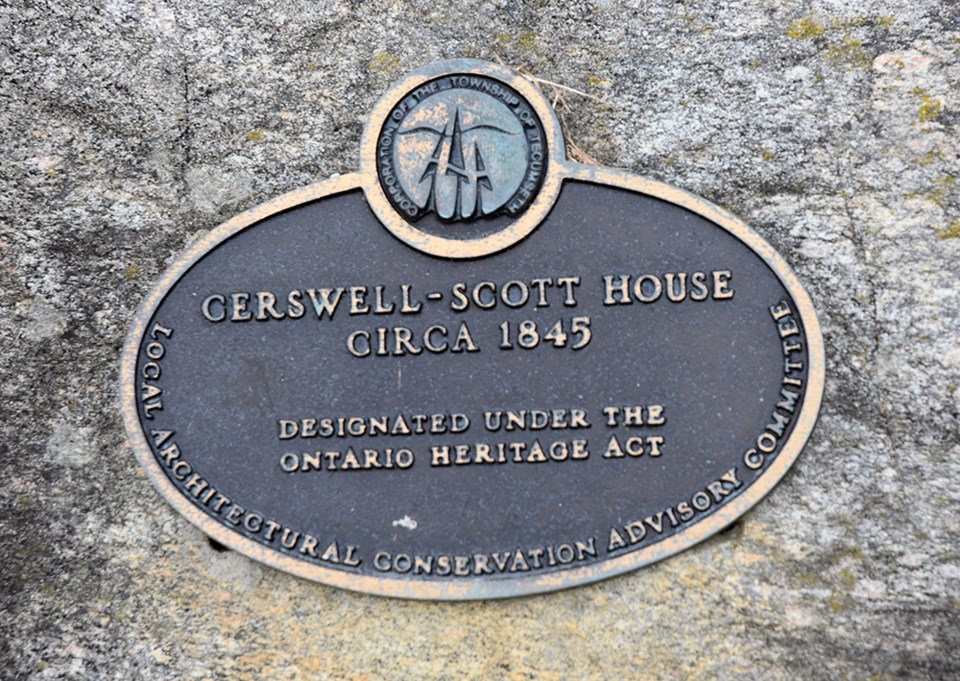Bradford West Gwillimbury’s history of military service dates back to the early years of Upper Canada. Samuel Lount and his brother George conducted the initial survey of West Gwillimbury, Innisfil and Tecumseth Townships in 1818-1820. A blacksmith by trade, Lount eventually settled in Holland Landing — and in 1834 was persuaded to enter Simcoe County politics. He was among those sympathetic to reformer William Lyon Mackenzie, and his fame stems not from the survey that opened the townships to settlement, but from his involvement in the 1837 Rebellion, an attempt to break the stranglehold of the Family Compact on land and political power.
On Dec. 4, 1837, the reformers began gathering at Montgomery’s Tavern. On Dec. 7, nearly 700 poorly-armed rebels marched on Toronto, where they were routed by Simcoe County Militia, which included many West Gwillimbury settlers. Among the volunteer militia representatives of many local families: Capt. William Sutherland, Sgt. William Bannerman, Ensign D.G. McKay, Sgt. John Fennell, Pte. George Evans, Pte. Wm. Coulson.
Bradford was loyal to the crown. Cpt. Thomas Drury noted, when rebellion broke out: “People assembled here (Bradford) to oppose it.” On Dec. 6, Drury wrote, “men assembled from the back townships at this place. We marched about 1 o’clock, 350 strong under Captain Hill. Colonel (Jeremiah Wilkes) Dewson and I went with the Scotch Company. A piper played before as Rev. McKillican accompanied the expedition. At night we reached the Quaker settlement about 27 miles from Toronto. This day Sir F. Bond Head attacked the rebels and totally dispersed them.”
In the following days, the militia took 57 prisoners. Of them, Drury was to write, “It appears many were not rebels but farmers.” The prisoners spent months in jail, before being paroled. Samuel Lount and Peter Matthews were captured and executed for high treason. Anthony Van Egmond was also arrested for treason but died in prison. William Lyon Mackenzie fled to the U.S., from which base he mounted a series of violent border raids. Eventually, Mackenzie returned to Canada. He served as a member of the Legislative Assembly of the Province of Canada from 1851 to 1858.
The battle for the independence of Ireland also touched BWG. The Fenian raids of the mid-1800s had the goal of establishing a free Irish republic in Upper Canada, to be used as a bargaining chip for a free Ireland. In 1866, Fenian leaders planned to send 3,000 men to attack Stratford, another 5,000 to attack Port Stanley and Hamilton, proposing to meet up and march on Toronto. Most of the Fenians were stopped before reaching the Canadian border, forced to retreat or captured — but the raids inspired the establishment of drill sheds in communities that included Bond Head, with a firing range set up on the farm of John Cerswell, as well as Cookstown and Bradford. Bradford’s drill shed was located on the east side of Simcoe Road on the fairgrounds, while the rifle range was located near the present Bradford legion.
From Governor Simcoe Slept Here: The Legacy of West Gwillimbury, biographi.ca, and other online sources.
Do you have a little-known fact about BWG’s history? Contact [email protected] with the details.

